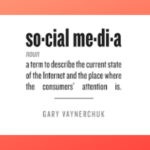Avoid Stereotypical Generational Marketing Pitfalls
Generational marketing is becoming an industry catchphrase. In the simplest terms, it is marketing to people based on their age. Marketers are seeking to gain a competitive advantage by aiming at three generational targets: Baby Boomers, Gen X, and Millennials. Tailoring your marketing message to specific groups based on their perceived preferences, attitudes, and upbringings is smart…or is it? Omnichannel marketing is already generational, offering a seamless customer experience through every step of the buying process. What you discover about these three groups may astonish you.
Millennials
Lately, the pop culture conversation is centered around Millennials. It’s getting old (and so are they). They are touted as the largest generation of entrepreneurs and an economic force. But, are Millennials truly the economic force that they are hyped to be? They have aspirations to entrepreneurial success. They love the flexible lifestyle. They are driven by social purpose more than financial reward, and they are hindered by financial instability and lack of experience. Despite their high level of interest in owning their own business, they are failing and failing often. The Small Business Administration found that fewer than 4% of 30-year-olds were self-employed full-time. The number of self-employed Americans under age 30 has dropped 65% since 1980.
So why the huge movement to market to Millennials? Born between 1981 and 1999, they are the first generation of digital natives, meaning that they, according to Karchmer-Klein and Shinas, “have been immersed in a technology-saturated culture, where computers, the internet, cell phones, instant messaging and social networking are readily available, and 24/7 interaction is expected.” In other words, Millennials are reshaping the way goods and services are being marketed. They don’t respond to traditional marketing tactics and are motivated by ease of experience. They decide where to eat based on Instagram pictures, choose their clothes based on Facebook posts, and have their groceries delivered.
Despite this, Millennials still have over $200B in buying power (much like the “teeny boppers” of the 60’s and 70’s, they’re using their parent’s money) so marketers are trying to hook this generation.
- Focus on Innovation – Millennials love the next big thing. Marketing to Millennials should take an approach that shows a new perspective on a common task.
- Use Reviews – Be sure that your online reviews and customer experiences are up to par.
- Use Social Media Incentives – Millennials are more likely to “check-in” to a business if it means they will receive a coupon or a discount.
- Use Rewards and Loyalty Programs – Millennials love using their mobile devices to interact with a brand’s loyalty program.
- Try Radio Commercials – This may seem old school, but maybe video didn’t really kill the radio star, and it sure didn’t off the podcast star. More Millennials listen to the radio that Gen Xers or Baby Boomers and podcasts are just as popular as Netflix.
Baby Boomers
Born between, 1946 and 1964, and often referred to by marketers as “the group who still leaves and listens to voicemails,” Boomers grew up during the American dream years of prosperity and plenty, and they are generally thought of by marketers as being “technologically challenged.” You might be surprised. They do so much more than “mall walk” and pick up prescriptions. Boomers of all ages post pictures on Facebook and Instagram, shop online, Tweet with their favorite politicians and have LinkedIn profiles. They understand the difference between a “tag” and a “message,” and they can text and email. And, by the way, most of them don’t leave voicemails because they know that they’ll never get a return call. They do enjoy face-to-face interaction, possibly because they still know how to engage in conversation.
Boomers have the highest value as consumers in the market today. They spend the most money on each shopping trip, and they spend the most money on technology. They like to splurge. They like having premium cable and the latest smartphone. Marketers need to take a good look at the financial impact of this group.
- Take advantage of brand loyalty – They are not as resistant to change as you have been led to believe, but if you can prove your product is great quality and will be essential to them indefinitely, you should be able to acquire some Boomers as customers.
- Go for the Up-Sell – Boomers like knowing how a service will make their lives easier or more pleasant without feeling pushed. An additional few dollars a month for a premium cable channel might be just what they want.
- Tie in Cash-Back – Boomers are used to spending enough at certain places to make cash back programs worth the expenditure. They are big fans of credit cards because of the points they can generate through large purchases.
- Ditch the Hard Sell – Give this group the information they request about your product or service and no more.
- Ramp Up the Customer Service – This group will take time to research, compare and make an informed decision. Be prepared with outstanding customer service and ready answers.
Generation X
This group is the smallest generation. Often referred to as the bridge between the Boomers and the Millennials, they are peaking in their careers while juggling child care and home ownership. They have the potential for increasing sales because they have reached the top of their earning power. Even though they grew up without the online shopping experience, they have fully embraced it but still enjoy a trip to the store. They claim to be dedicated to lists while shopping but admit to making unplanned purchases during these trips. Their values are the same as those of Boomers when it comes to honest advertising. Don’t push or manipulate them. They are looking for high quality at the best price.
Gen Xers don’t pay much attention to the latest trends, and they look for a user-friendly buying and check-out experience. This generation is tech-savvy, or they have at least one teen in the house who can talk them through the buying experience.
- Email Marketing – This is the best way to communicate with Generation X. This generation is already checking email at work, at home, on tablets, on iPhones, and on desktops.
- Lifestyle Nurture Programs – This generation is looking to make their busy lives a bit easier. Build customer loyalty with email updates to new moms, pet owners, and exercise gurus, and check in with birthday and anniversary wishes. This is a great way to establish customer loyalty.
- It’s Time for a Break – Approximately 50% of Gen Xers plan on taking a vacation in the next 12 months. Advertising goods and services that can help while they’re away, like security companies or items that they can use on vacation, is a winner for them.
- Goody Two-Shoes – Organically and ethically produced products are in high demand for some of this group. A service or product that benefits society is likely to be attractive to a segment of this generation.
- Build Trust – Be sure that your website exhibits detailed product descriptions and demo videos. Have a knowledgeable chat team ready to answer questions.
The takeaway from this is, don’t create a marketing strategy based on everything you read or hear at the latest and greatest industry conference. Don’t fall for the hype. Millennials are not the financial dynamos that they appear to be. Boomers are not a bunch of doddering, technically challenged, change resistant retirement home residents who eat dinner at 4:00 and watch reruns of M*A*S*H. Gen Xers are not all environmental activists who rarely shop in brick and mortar stores. Focus your marketing toolkit on the common traits that anyone would look for when shopping and comparing products and services: communication, user experience, features and benefits, and rewarding customer loyalty. Every group appreciates high quality and great service.


